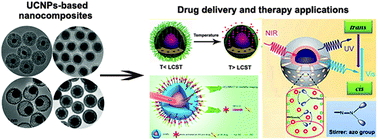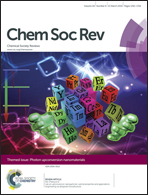Current advances in lanthanide ion (Ln3+)-based upconversion nanomaterials for drug delivery
Abstract
Lanthanide ion (Ln3+)-based upconversion nano/micromaterials that emit higher-energy visible light when excited by low-energy NIR light have aroused considerable attention in the forefront of materials science and biomedical fields, which stems from their unique optical and chemical properties including minimum photodamage to living organisms, low autofluorescence, high signal-to-noise ratio and detection sensitivity, and high penetration depth in biological or environmental samples. Thus, Ln3+-based upconversion materials are rising new stars and are quickly emerging as potential candidates to revolutionize novel biomedical applications. In this review article, we mainly focus on the recent progress in various chemical syntheses of Ln3+-based upconversion nanomaterials, with special emphasis on their application in stimuli-response controlled drug release and subsequent therapy. Functional groups that are introduced into the stimuli-responsive system can respond to external triggers, such as pH, temperature, light, and even magnetic fields, which can regulate the movement of the pharmaceutical cargo and release the drug at a desired time and in a desired area. This is crucial to boost drug efficacy in cancer treatment while minimizing the side effects of cytotoxic drugs. Many multifunctional (magnetic/upconversion luminescence and porous) composite materials based on Ln3+ have been designed for controlled drug delivery and multimodal bioimaging. Finally, the challenges and future opportunities for Ln3+-based upconversion materials are discussed.

- This article is part of the themed collection: Photon Upconversion Nanomaterials

 Please wait while we load your content...
Please wait while we load your content...